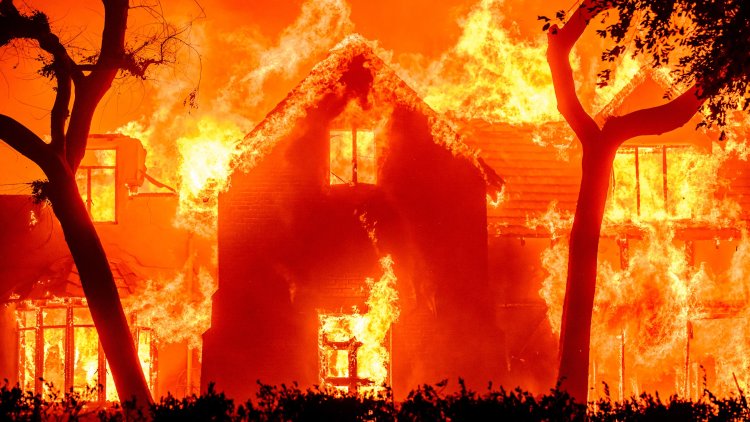The Particular Horror of the Los Angeles Wildfires
Southern California is no stranger to fires. But the dreadful blazes that began yesterday are potentially transformative.

When wildfires began ravaging Los Angeles yesterday, the story was familiar in many respects: In dry and windy weather, a small blaze can spread so fast and so far that no one can do anything to stop it, especially in terrain dense with brush and hard for firefighters to reach.
Pacific Palisades, where the first fire began, is such a neighborhood; its roughly 24 square miles are beside rugged wilderness. The roads are winding. Homes are built on parts of a mountain range and in six major canyons. A fire-hazard map proposed by the California Department of Forestry and Fire Protection in 2022 described the area as “very high” risk—the highest possible categorization. And it has burned before, most significantly in November 1961, during a historic blaze.
Yet for all their predictability, these blazes are also outliers. Among people I spoke with who have observed Southern California wildfires for decades, several felt that these fires are unusually dramatic and dreadful, and have more potential than most to alter regional politics.
[Conor Friedersdorf: The Southern California wildfire paradox]
First, consider the warnings that preceded the fires. On Monday, the National Weather Service alerted Southern Californians to an imminent “LIFE-THREATENING, DESTRUCTIVE, Widespread Windstorm,” language far stronger than warnings typically given just before the Santa Ana winds begin to blow, rushing down through mountain passes and canyons to sea level, heating up and drying out along the way.
Yesterday, hours before any fire began, Los Angeles Times subscribers woke up to this front-page headline “Unusually Strong Winds Carry High Risk of Winter Fires.” It warned of gusts up to 100 miles per hour and quoted a fire official describing the danger to the region as “extreme.” The prediction could hardly have been more emphatic.
Sure enough, by lunchtime, a fire hadn’t just ignited in Pacific Palisades, threatening the Getty Villa––it had spread out of control in a visually spectacular manner. Twenty miles away, people could walk onto the beach, look north along an unobstructed coastline, and see a plume of smoke behind the Santa Monica pier. It billowed out over the bay for miles. By evening and especially after nightfall, people could see flames seeming to engulf the hillsides north of Santa Monica. A blockbuster using CGI to convey “L.A. in flames” would not have been more dramatic.
Footage shot within Pacific Palisades itself was just as shocking. News crews and residents recorded terrifying scenes amid architecturally striking custom-built homes.
Many owners of Palisades real estate are unusually wealthy and influential. And that brings us to the politics of the blaze. The real-estate developer Rick Caruso, who owns a shopping center in the neighborhood, alleged on a local news channel that fire hydrants didn’t have enough water to supply firefighters with what they needed. He said that someone should ask Los Angeles Mayor Karen Bass, whom he ran against in the most recent mayoral election, what went wrong.
The entrepreneur Wes Nichols, who has lived in the neighborhood for 26 years, evacuated sometime after dark. He posted on social media that he personally saw more than 100 homes engulfed in flames, adding, “I’m mad at what I saw. Our politicians have failed us. Unprepared, unimaginative, understaffed, now overwhelmed. Heads must roll for this disaster.”
[Read: The wildfire risk in America’s front yards]
Bass wasn’t able to represent herself to the public or answer her critics because when the fire began, she was in Ghana, attending the inauguration of its president.
Things may only get worse from here. The Palisades Fire, having already spread at least to Malibu, destroying homes and businesses, now threatens Santa Monica and beyond––that is to say, it could still spread from the edges of greater Los Angeles to a swath of its dense core. Weather is the biggest factor in the city’s fate.
Strong, gusty winds are forecast to continue in much of the region throughout the day today. Wind is howling outside my window an hour south, in Orange County. And for many miles in every direction, a new catastrophic fire could start at any moment. I’ve lived through 45 years of Southern California wildfires. I can’t recall having as much uncertainty about how not just one community but the region as a whole will fare in the next 24 hours.
What's Your Reaction?




















